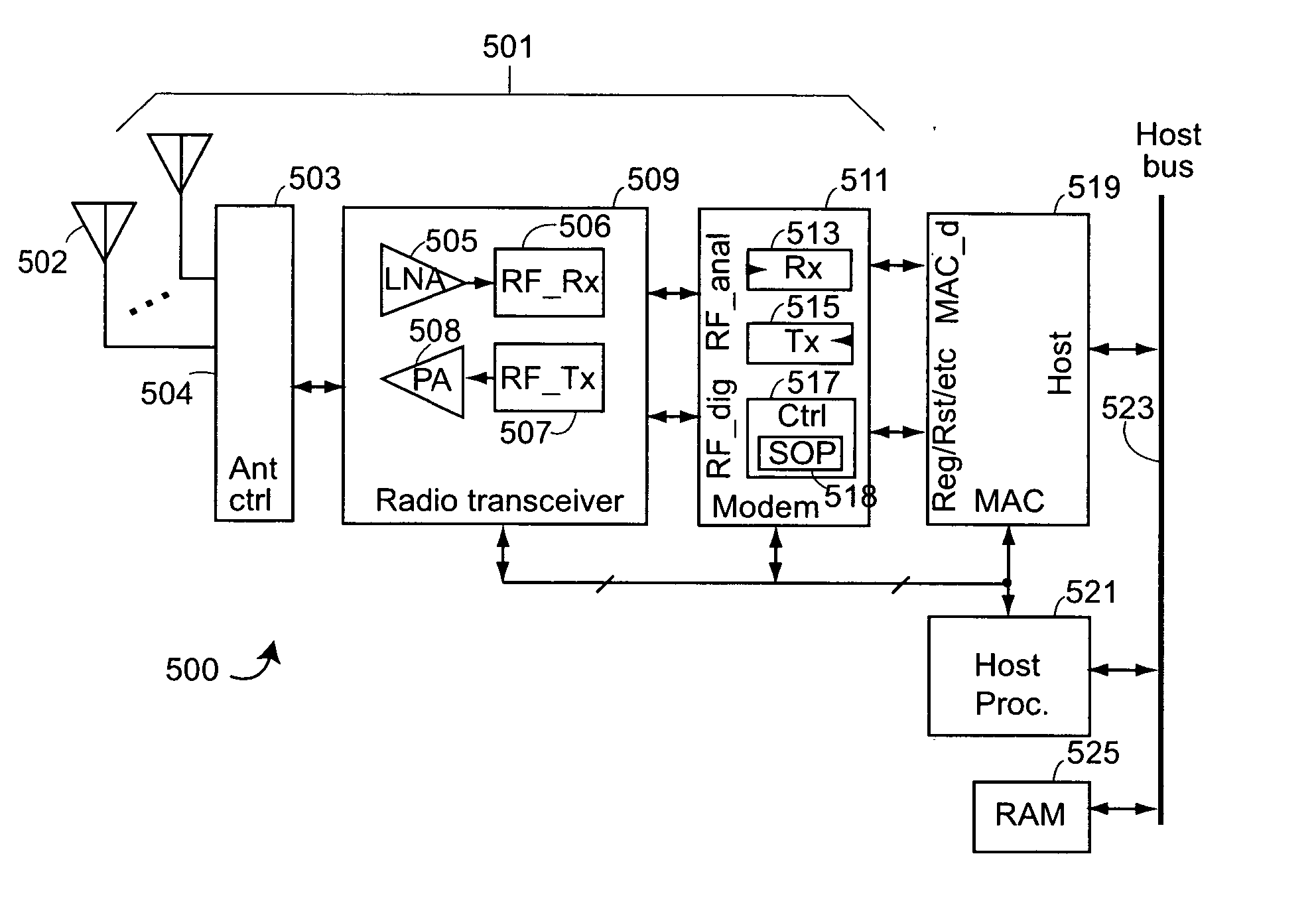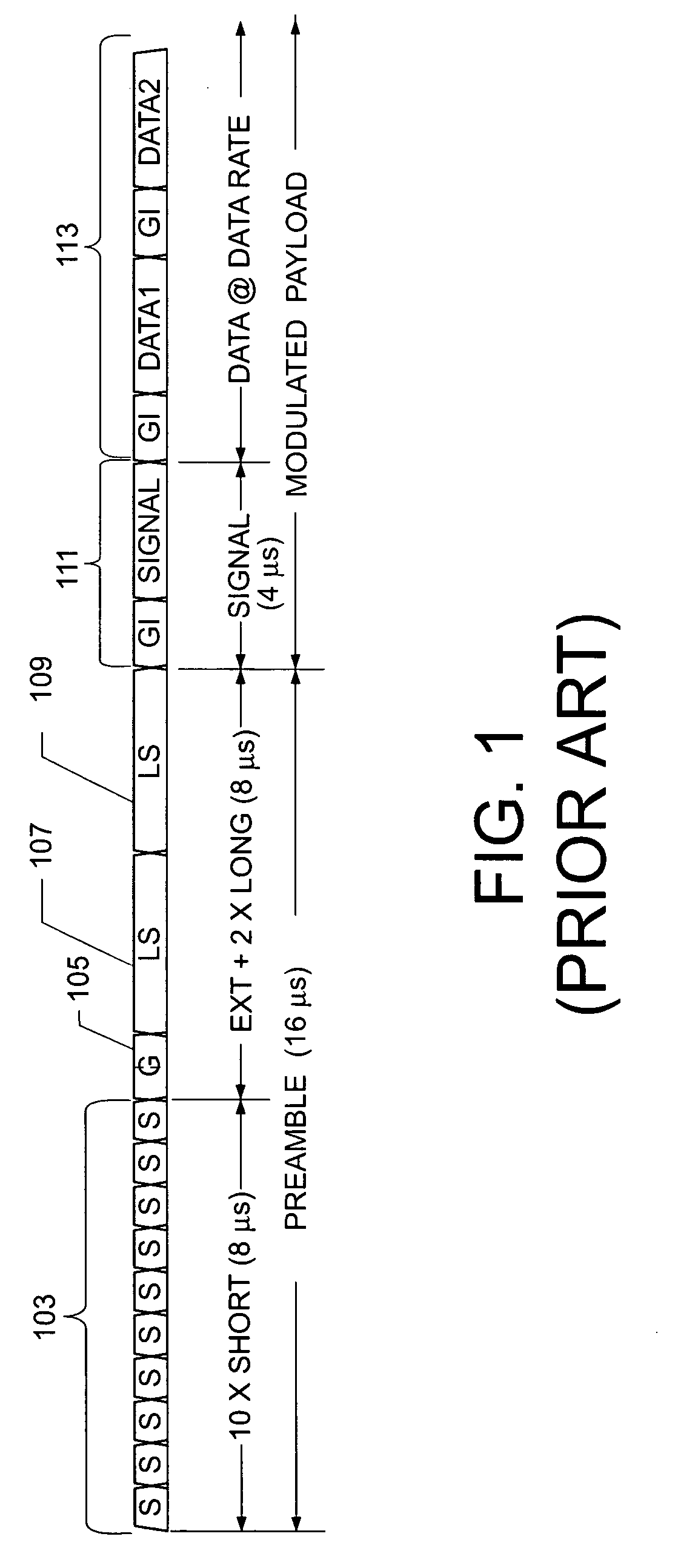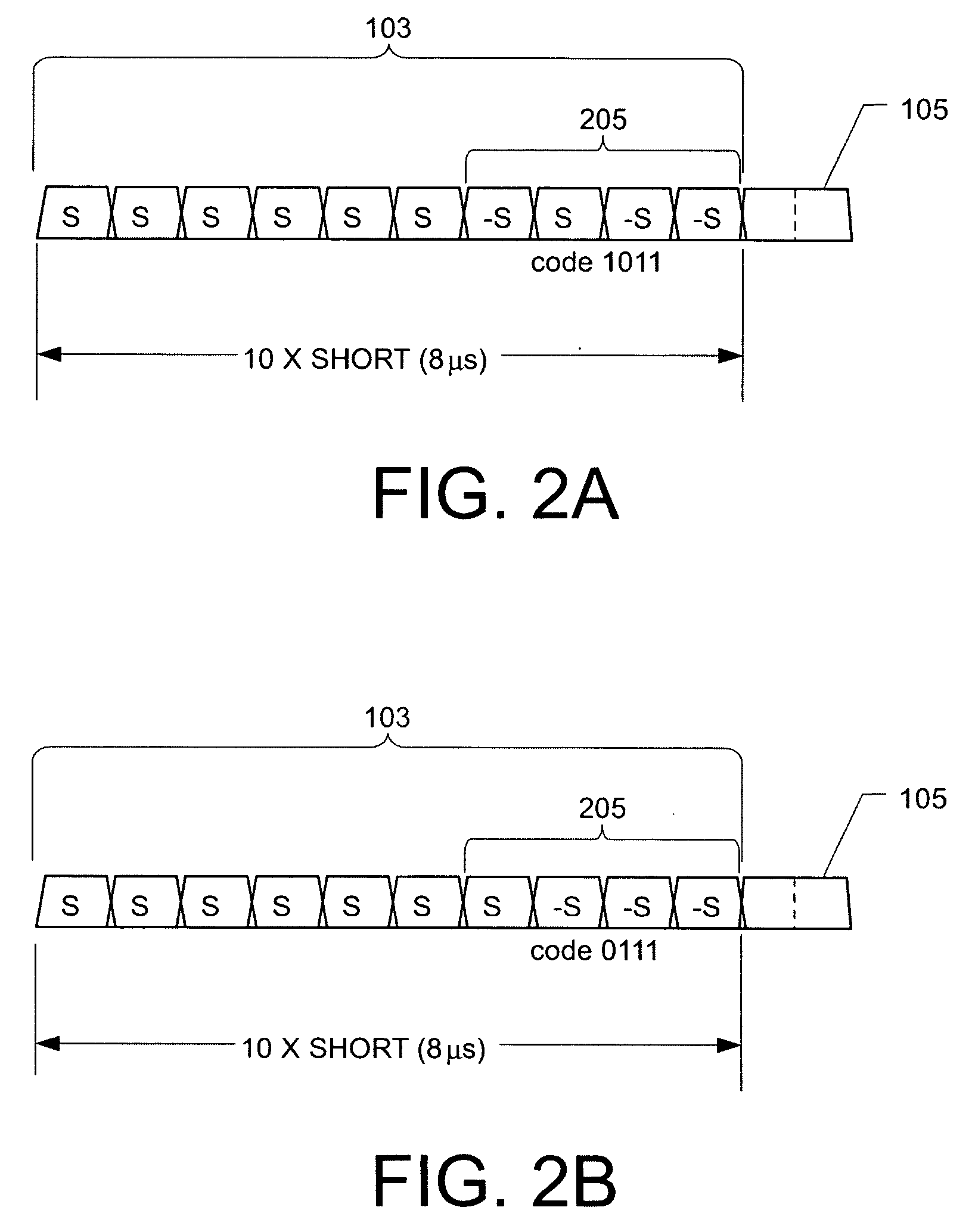Method and apparatus for cell identification in wireless data networks
a wireless data network and cell identification technology, applied in the field of cell identification in wireless data networks, can solve the problems of ineffective approach to increase the capacity of the wireless network, loss of large part of the increase in spectral efficiency from frequency reuse, and inability to provide a medium, etc., to achieve the effect of improving the system capacity
- Summary
- Abstract
- Description
- Claims
- Application Information
AI Technical Summary
Benefits of technology
Problems solved by technology
Method used
Image
Examples
Embodiment Construction
[0024] One aspect of the invention provides for ascertaining, at the physical layer level, whether or not a packet received at a station of a cell of a wireless network is from another station of the cell. A cell in the context of the invention is a set of wireless stations of a wireless network that are meant to communicate with each other. An example of a cell is an infrastructure network in which there is one station, called the access point, through which each station of the cell communicates. Another example of a cell is an ad-hoc network of stations that communicate with each other.
[0025] Each such cell is designed to have an area of coverage. To cover a large area, e.g., a building, many such cells are used.
[0026] The description described aspects of the invention applied to wireless local area networks that conform to the IEEE 802.11 standard. In particular, this description will be presented applied to the OFDM variants of the IEEE 802.11 standard, in particular applied t...
PUM
 Login to View More
Login to View More Abstract
Description
Claims
Application Information
 Login to View More
Login to View More - R&D
- Intellectual Property
- Life Sciences
- Materials
- Tech Scout
- Unparalleled Data Quality
- Higher Quality Content
- 60% Fewer Hallucinations
Browse by: Latest US Patents, China's latest patents, Technical Efficacy Thesaurus, Application Domain, Technology Topic, Popular Technical Reports.
© 2025 PatSnap. All rights reserved.Legal|Privacy policy|Modern Slavery Act Transparency Statement|Sitemap|About US| Contact US: help@patsnap.com



